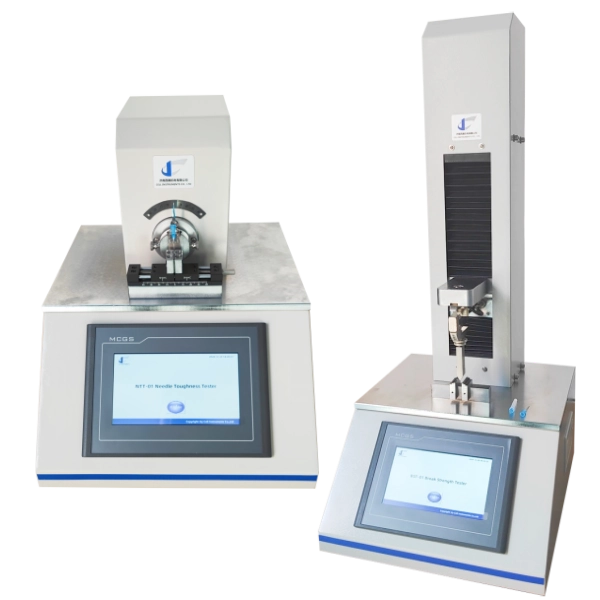ISO 9626
Stainless Steel Needle Tubing Test
ISO 9626 specifies the requirements and test methods for stainless steel needle tubing used in the manufacture of medical devices such as hypodermic needles and cannulas. This international standard ensures that the tubing used in medical applications meets consistent performance and safety requirements. Two key tests under ISO 9626 are the stiffness of tubing test i resistance of tubing to breakage test, which are essential to assess the mechanical integrity and durability of stainless steel tubing.

What is ISO 9626?
The ISO 9626 standard, full title “Stainless steel needle tubing for the manufacture of medical devices — Requirements and test methods”, applies to rigid stainless-steel needle tubing suitable for the manufacture of hypodermic needles and other medical-device components.
ISO 9626 plays a crucial role in ensuring that stainless steel tubing used for medical needles has sufficient mechanical strength, flexibilityoraz resistance to fatigue. Tubing that fails to meet these requirements may result in needle bending or breakage during use, posing risks to patients and healthcare professionals.
The standard defines:
- Material specifications for stainless steel tubing.
- Dimensional tolerances including wall thickness and diameter.
- Mechanical property tests, such as stiffness and breakage resistance.
Adhering to ISO 9626 helps manufacturers maintain consistent product quality and comply with international medical device regulations.
When assessing medical-device tubing, two mechanical performance aspects are especially significant:
Stiffness of Tubing Test
The stiffness of tubing test evaluates how resistant the stainless steel needle tubing is to deformation when a force is applied. According to ISO 9626 Annex B, the test involves supporting a specified length of tubing at both ends and applying a known downward force at its center. The amount of deflection is then measured to determine stiffness.
This test provides insight into how much the tubing will flex under load — a key factor in ensuring the needle’s stability during insertion.
Procedure Overview
-
The tubing is placed on a stiffness testing apparatus with a defined span based on its size.
-
A loading plunger applies a downward force at a speed between 1 mm/min and 10 mm/min.
-
The deflection at the point of loading is recorded to the nearest 0.01 mm.
Higher stiffness indicates stronger tubing that resists bending, while lower stiffness may suggest increased flexibility. Both properties are important depending on the intended medical application.
Cell Instruments’ Stiffness Tester offers a precision-controlled loading system and digital displacement measurement, fully compliant with ISO 9626 requirements. It allows laboratories to perform stainless steel needle tubing stiffness tests with high accuracy and repeatability.
Resistance of Tubing to Breakage
The resistance of tubing to breakage test (ISO 9626 Annex C) evaluates the tubing’s ability to withstand repeated bending without cracking or breaking. This simulates real-world conditions where a needle may be subjected to cyclic stresses during handling or use.
Test Principle
One end of the tubing is rigidly fixed, and a repeated bending force is applied at a specific distance. The tubing is bent alternately in opposite directions through a defined angle — typically 25° for regular-walled tubing, 20° for thin-walledoraz 15° for ultra-thin-walled tubing — for 20 complete cycles.
After testing, the tubing is visually examined for any signs of breakage.
Cell Instruments’ Break Resistance Tester features programmable cyclic motion control and a precise angular displacement system, enabling accurate evaluation of the tubing’s fatigue resistance oraz durability.
FAQs
A: ISO 9626 is an international standard specifying the requirements and test methods for stainless steel needle tubing used in medical device manufacturing. It defines parameters for dimensions, stiffness, break resistance, and overall mechanical performance.
A: The stiffness of tubing test ensures the tubing maintains sufficient rigidity and does not bend excessively under load. It is essential for the stability and precision of medical needles during insertion.
A: This test measures the tubing’s ability to withstand repeated bending cycles without cracking. It helps confirm the durability and safety of stainless steel medical tubing in clinical applications.
A: Cell Instruments’ stiffness tester and break resistance tester are specifically designed to perform ISO 9626-compliant tests, offering precise force control, automated measurement, and reliable repeatability.
A: Quality control engineers, laboratory technicians, and medical device manufacturers who produce or validate stainless steel needle tubing should perform these tests to ensure compliance with international safety standards.
